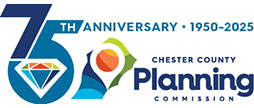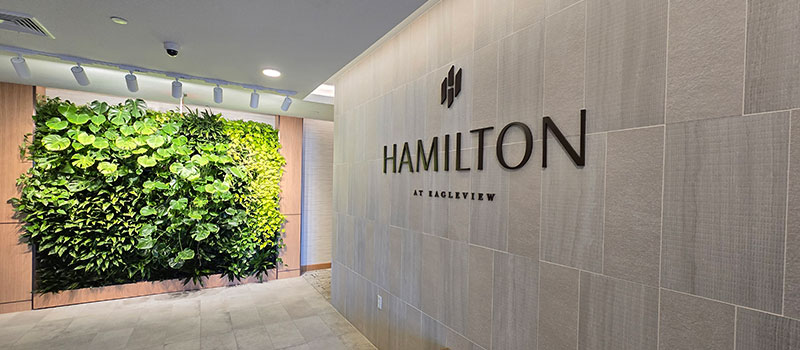Incentivizing Specific Design Features
The following are some of the design features a municipality may wish to incentivize, along with local examples of ordinances that have been adopted to incentivize or require these features.
Energy Efficiency
Building codes set minimum standards for energy efficiency of building components, from insulation to windows and doors. A building's "envelope" plays a key role in determining levels of comfort, natural lighting, ventilation, and how much energy is required to heat and cool a building. Municipalities can incentivize building to higher standards of energy efficiency than those specified in the 2018 International Energy Code — the code adopted by the state along with some state-specific amendments.
Ordinance Example — Energy Efficiency
In Narberth Borough (Montgomery County, PA), if a property owners wants to develop a new or substantially improved portion of an Accessory Dwelling Unit (ADU) through a conditional use application, it is a required condition that the ADU be constructed pursuant to the standards of the most current version of the International Energy Conservation Code (IECC), regardless of whether such version of the IECC has been adopted in the Pennsylvania Construction Code.
Building Energy Systems
In Southeastern PA, new construction that is heated and cooled by electric energy systems generally has significantly lower greenhouse gas emissions than those using natural gas or oil furnaces. Once electrified, a building could then potentially be powered solely by renewable energy generated either on or off site. Ordinances could incentivize that new construction be electrified or provide incentives for the installation of on-site renewable energy systems at the time of construction.
If a municipality wishes to incentivize the use of renewable energy, it should first review its renewable energy ordinance/supplemental use provisions to ensure existing codes are not too restrictive. If the municipality does not have supplemental use provisions for accessory use renewable energy systems like solar panels, it is recommended they adopt these provisions. For more information refer to DVRPC's Renewable Energy Ordinance Frameworks for best practices that encourage renewable energy development and Chester County Planning's webpage on Solar Ordinances and Permitting for municipalities.
Ordinance Examples — Energy Systems
Lansdale Borough's Downtown Business Overlay District offers a 20 foot height bonus when an applicant installs a solar, wind, or geothermal power-generation facility that is designed to provide at least 15% of the expected annual energy use for the building. The facility shall be designed and installed under the direction of a professional with demonstrated expertise in the design and construction of such facilities.
Narberth Borough — Prohibition of fossil fuel systems for Accessory Dwelling Units: Utility hook-ups, installations, and/or storage of natural gas, propane, oil, and other fossil fuels shall be prohibited for new Accessory Dwelling Units or new portions of the Accessory Dwelling Unit through a conditional use application. Such prohibition does not apply to the conversion of existing portions of an Accessory Building to an Accessory Dwelling Unit. In addition, backup/emergency generators utilizing fossil fuels shall be permitted for the sole purpose of maintaining a power supply during a temporary interruption of the power grid to which the Accessory Dwelling Unit is connected may be subject to power outages.
Narberth Borough — Conditional Use Flexibility for Green Buildings: Narberth Borough's zoning ordinance allows for certain uses otherwise not permitted in a zoning district to be permitted as a conditional use if they meet the conditional use criteria plus specified "Green Building Bonus Standards." These standards include:
- Construction pursuant to the most recently revised version of the International Energy Conservation Code, regardless of whether PA has adopted the code or not.
- New fossil fuel powered utility hookups are prohibited for new or substantially improved portions of the building.
- Electricity, heating, and cooling must be provided from onsite renewable sources if reasonably viable.
- Uses on the property must acquire their electricity from a 100% renewable energy provider.
- Electric vehicle charging stations are required for at least 25% of the required parking spaces.
Preparation for Energy Transition Technologies
(i.e., "solar-ready" and "EV-ready")
Preparing new construction to be compatible with a future rooftop solar array or electric vehicle charging station has a nominal impact on upfront construction costs and can reduce future barriers to building owners adopting these technologies. While requiring parking spaces to be EV-ready can be incentivized or required, the building preparations required for solar-readiness (such as reinforced roof structures, wiring and conduit installation) must be incentivized and will typically not be burdensome for an applicant.
Example Ordinances
Solar-Ready Ordinance Example
Delaware's state code includes a requirement for new buildings with a footprint of 50,000 SF or greater and under five stories to design a portion of the roof to support future solar development. Pennsylvania municipalities could request approval from the State to adopt a change to the UCC requiring a similar provision, although as of 2024 the State has not received any requests to include such a provision. Alternatively, municipalities could incentivize this design feature in their zoning or subdivision ordinance. Delaware's code could serve as a model for what types of buildings might be subject to such a requirement or incentive.
EV-Ready Ordinance Example
West Chester Borough's Subdivision and Land Development Ordinance requires a certain percentage of parking spaces serving non-residential or multi-family uses to have electrical switchgear installed to support the operation of level 2 charging stations (also known as "make ready" spaces). For new single-family dwellings, the dwelling or garage must be wired to accommodate a future level 2 charging station.
Narberth Borough and Phoenixville Borough's SALDO ordinances both include broad provisions authorizing the Borough to designate and EV charging spaces within public parking lots and enforce their proper use.
Green Building Certifications / Design Features
A municipality can leverage existing building performance programs and rating systems when incentivizing building energy efficiency. These programs have the benefit of being thoroughly vetted by industry experts and come with ready-made standards. Popular programs include; LEED, Energy Star, Passive House, Well certification, Green Globes, Energy Conservation Codes from the International Code Council, and others. As each program has different goals, municipalities should thoroughly research these programs to ensure they meet the goals of the municipality before incentivizing one program over another.
Ordinance Examples — Green Buildings
West Chester Borough has a voluntary Sustainable Certification Program that recognizes developers who integrate sustainable features into new commercial developments and rehabilitation projects. To achieve certification, participants must secure points from a checklist of sustainable practices. Certified projects receive a plaque for display on the frontage of the business, along with press initiated by the Borough once completed. The Borough's Zoning Ordinance includes a "Height Option Overlay District" that specifies that all new buildings over 45 feet must be designed, constructed and maintained at a minimum certification level of gold based on their Sustainable Certification Program.
Doylestown Township's Green Points system awards applicants for new development projects (both residential and non-residential) points for green building elements, including energy efficiency measures. Each point equates to a 1% reduction in permit fees, with a maximum reduction of 25%. Any non-residential building that wishes to participate in the Green Points program must comply with the United States Green Building Council requirements for a certified LEED project (and points are awarded for achieving each level of LEED designation).
Kennett Township's zoning ordinance permits additional height in exchange for renewable energy, green building design, or Transferrable Development Rights (TDRs) for Traditional Neighborhood Developments within their Commercial District. See Section 240 -1003.F.12.
Lower Merion's BMV Bryn Mawr Village District provides a bonus Floor-to-Area Ratio (FAR) of .02 if a building is constructed with a green roof.
Chester City's zoning ordinance includes "Green Incentives" (see section 1361.018) that allow for increased flexibility, including provisions such as:
- Flexibility in dimensional requirements and building height when solar panels are included in the project.
- Projects that include a green roof may exceed the maximum building coverage.
- Pervious pavement is considered impervious coverage, but proposals that include pervious pavement are permitted additional impervious coverage.
- Buildings that will be LEED certified may exceed the maximum building coverage and/or impervious coverage .
- Applicants are encouraged to provide electric vehicle charging stations, and these spaces may take the place of required parking spaces.
Abington Township's Business Center District ordinance (starting on page 61) allots bonus points for green building features which can be used to achieve increased height or density. The ordinance awards one bonus point for:
- Provision of a green roof. At least 50% of the roof must have vegetative cover, and an operating & maintenance (O&M) agreement must be made with the Township, with provisions acceptable to the Township for the design and maintenance of the Green Roof, and
- Provision of a solar array with panels meeting a minimum size of 50 s.f., or 10% of the roof area, whichever is greater.
Cheltenham Township's Bonuses for Sustainable Development apply to certain classes of development within their MU3 Mixed Use district. Class 1 developments that utilize this incentive may: increase maximum impervious area to 50% of the total lot area; reduce required green area to a min. of 50% of the total lot area, or increase the building height to 60 feet. Class 2 developments may increase their Floor Area Ratio to 0.5. To achieve these incentives, applicants must incorporate at least three sustainable development practices from a specified list that includes: green stormwater infrastructure, green roofs, on-site renewable energy systems, minimized woodland disturbance, dedication of habitat/conservation land, and reduced heat island effect.


